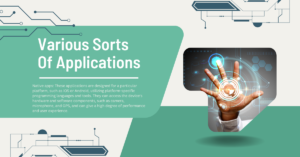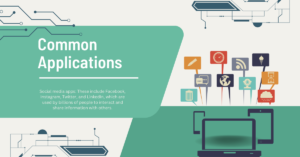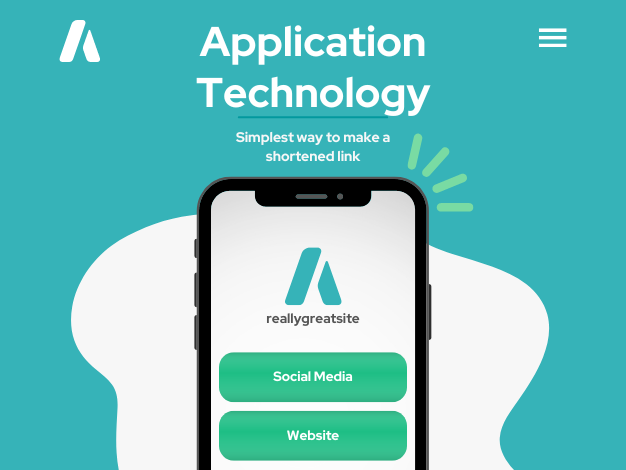Why Medical technology is important
Medical technology refers to the application of technology and engineering concepts in the design and development of medical devices, instruments, equipment, and software used to diagnose, monitor, treat, or manage medical diseases. Medical technology comprises a broad variety of products and uses, such as imaging and diagnostic equipment, implanted devices, prostheses, wearable sensors and monitors, telemedicine and digital health tools, and robotic surgical systems.
It has profoundly altered healthcare over the last several decades, allowing quicker and more accurate diagnosis, more precise treatment, and better patient outcomes. It has also helped to increase patient safety and lower the chance of problems during medical operations.
Examples include X-ray machines, MRI scanners, ultrasound machines, pacemakers, insulin pumps, prosthetic limbs, blood glucose monitors, and electronic health records. The area is continually growing, with new discoveries and breakthroughs being created to enhance healthcare results and patient experiences.

History of Medical Technology
The history extends back thousands of years, with early people utilizing natural resources like herbs, plants, and minerals for medicinal reasons. Throughout time, it has developed substantially, driven by the improvement of scientific knowledge, the rise of technology, and the needs of healthcare.
Following are some major milestones in the history of medical technology:
- Ancient civilizations, such as the Egyptians, Greeks, and Romans, created surgical methods, prostheses, and medicines utilizing plants and other natural materials.
- In the 19th century, the creation of the stethoscope and the discovery of anesthesia changed medical diagnosis and surgery.
- Throughout the 20th century, medical technology evolved significantly, with the creation of vaccinations, antibiotics, and other medications, as well as the introduction of X-ray machines, MRI scanners, and other diagnostic imaging technologies.
- The 21st century has witnessed a huge transition towards digital health technology, including electronic health records, telemedicine, wearable devices, and artificial intelligence capabilities.
- Nowadays, medical technology plays a key role in healthcare, allowing quicker and more accurate diagnosis, more precise treatment, and better patient outcomes. Medical technology is continually improving, and its future promises to be packed with even more inventive and life-changing innovations.
- Varieties of medical technology
- Medical technology encompasses a broad variety of devices, instruments, equipment, and software used to diagnose, monitor, treat, or manage medical diseases. Following are some of the primary categories of medical technology:
- Diagnostic technology: This includes medical imaging instruments such as X-ray machines, CT scanners, MRI scanners, and ultrasound machines, as well as laboratory equipment such as blood analyzers and genetic testing tools.
- Therapeutic technology: This comprises devices and instruments used to give treatments, such as surgical equipment, radiation therapy devices, and medication delivery systems.
- Assistive technology: This comprises items that assist persons with impairments or injuries, such as prosthetic limbs, hearing aids, and mobility aids.
- Monitoring technology: This includes equipment that monitor patients’ vital signs, such as blood pressure monitors, heart rate monitors, and glucose monitors, as well as telemedicine systems that allow for remote monitoring and contact with healthcare specialists.
- Information technology: This includes electronic health records, medical billing and coding software, and other healthcare information management systems.
- Digital health technology: This includes mobile health applications, wearable devices, and other digital tools that encourage healthy behavior, track exercise goals, and monitor chronic ailments.
- Robotic technology: This includes robotic surgical systems, prostheses with improved sensors, and robotic exoskeletons that can assist patients with paralysis walk.
These are only a few examples of the various kinds of medical technology that exist, and new inventions are being created all the time to improve healthcare results and enhance patient experiences.

Pros of medical technology
Medical technology has altered healthcare in many positive ways, leading to a broad variety of advantages for patients and healthcare practitioners alike.
Following are some of the primary positives:
- Better diagnosis and treatment: It has allowed quicker and more accurate diagnosis of medical disorders, leading to earlier and more effective treatment. This may result in improved health outcomes, shorter hospital stays, and cheaper healthcare expenses.
- Improved patient safety: Also has lowered the likelihood of medical mistakes and adverse events by offering tools and technologies that allow healthcare workers monitor patients more closely and provide treatments with more accuracy.
- Improved access to healthcare: It has allowed healthcare to be provided remotely via telemedicine, which may assist people in rural or isolated places get healthcare treatments that they would not have been able to access otherwise.
- More individualized treatment: Also has led to the creation of technologies and systems that can be adapted to specific patients, leading to more personalized and focused care.
- Increased efficiency and productivity: It has simplified many healthcare operations, resulting to improved efficiency and productivity for healthcare practitioners, which may enhance patient care and lower costs.
- Advancements in research: Also has allowed researchers to gather and analyze vast volumes of data, leading to new insights into medical disorders and therapies.
Overall, It has considerably improved healthcare in many ways, and its continuous development promises to bring to even greater advantages for patients and healthcare practitioners.
Cons of medical technology
Although It provides numerous advantages, there are also some possible dangers to be aware of. Following are some of the primary drawbacks of medical technology:
- High cost: It may be costly to create and manufacture, which can lead to high expenses for consumers and healthcare providers. This may cause financial hurdles to getting treatment for certain people and can contribute to growing healthcare expenses.
- Dependency on technology: As healthcare grows more dependent on technology, there is a concern that healthcare personnel may become less experienced in some manual operations, leading to a loss of key abilities.
- Privacy and security concerns: This generally entails the collecting and storage of sensitive patient data, which may generate privacy and security hazards if the data is not adequately safeguarded.
- Possibility for errors: It may be complicated and may need specific training to utilise efficiently. If not utilised appropriately, medical technology may lead to mistakes that can hurt patients.
- Ethical problems: This may generate ethical difficulties, such as the use of genetic testing, stem cell research, and artificial intelligence. There is a need to guarantee that medical technology is created and utilised in an ethical and responsible way.
- Over-reliance on technology: It may be a beneficial tool, but there is a danger of over-reliance on technology at the cost of other crucial parts of healthcare, such as patient communication, empathy, and holistic treatment.
These are only a handful of the possible drawbacks of medical technology. It is necessary to examine the advantages and cons of medical technology carefully to ensure that it is utilised efficiently and ethically to enhance patient care.
Helpful Medical technology is important?
Totally, accommodating clinical innovation is unbelievably significant because of multiple factors:
1. Upgraded Patient Consideration: Clinical innovation assumes a basic part in working on understanding consideration and results. Imaginative gadgets and advances help medical services experts in precisely diagnosing sicknesses, checking patient wellbeing, and conveying compelling therapies. This prompts better tolerant results, decreased difficulties, and worked on personal satisfaction.
2. High level Diagnostics: Clinical innovation empowers more precise and convenient diagnostics, assisting medical care suppliers with distinguishing illnesses and conditions prior. This considers brief intercession and treatment, possibly saving lives and working on persistent anticipation. Symptomatic devices like imaging scanners, atomic diagnostics, and hereditary testing have reformed clinical practices and altogether further developed medical care results.
3. Therapy Headways: Clinical innovation drives progressions in treatment choices and strategies. From negligibly intrusive techniques to mechanical medical procedures, clinical innovation empowers medical care experts to carry out complex methods with accuracy, limiting patient distress, decreasing recuperation times, and further developing generally speaking therapy results.
4. Distant Medical care: The utilization of clinical innovation empowers far off medical care administrations, especially in underserved regions or locales with restricted admittance to medical services offices. Telemedicine stages permit patients to talk with medical care suppliers from a distance, empowering opportune admittance to clinical counsel, diminishing the requirement for movement, and further developing medical care access for rustic or segregated networks.
5. Persistent Illness The executives: Clinical innovation assumes an essential part in overseeing ongoing sicknesses really. Gadgets, for example, insulin siphons, consistent glucose screens, and heart screens assist patients with checking their circumstances and arrive at informed conclusions about their wellbeing. This enables people to effectively partake in dealing with their wellbeing and decreases the requirement for successive clinic visits.
6. Further developed Productivity and Work process: Clinical innovation smoothes out medical care work processes, diminishing authoritative weights and upgrading effectiveness. Electronic wellbeing records (EHRs), mechanized doctor request section (CPOE) frameworks, and computerized imaging frameworks work on information the board, lessen desk work, and further develop coordination among medical services groups. This permits medical services experts to zero in more on understanding consideration and invest less energy on managerial undertakings.
7. Exploration and Development: Clinical innovation adds to progressions in clinical examination and advancement. Through mechanical progressions, scientists can lead studies, break down enormous datasets, and foster new treatment modalities and treatments. This consistent pattern of examination and advancement powers progress in medical services, prompting worked on tolerant consideration and the improvement of novel arrangements.
8. Cost Reserve funds: While clinical innovation frequently requires starting speculations, it can bring about long haul cost reserve funds. By empowering early illness recognition, limiting emergency clinic stays, and improving therapy draws near, clinical innovation can diminish medical care costs for people, protection suppliers, and medical services frameworks.
Generally speaking, accommodating clinical innovation is fundamental for working on persistent consideration, upgrading diagnostics and treatment choices, expanding medical care access, further developing effectiveness, driving exploration and advancement, and producing cost investment funds. Its effect on medical care is huge, changing how medical services is conveyed and altering patient results.

